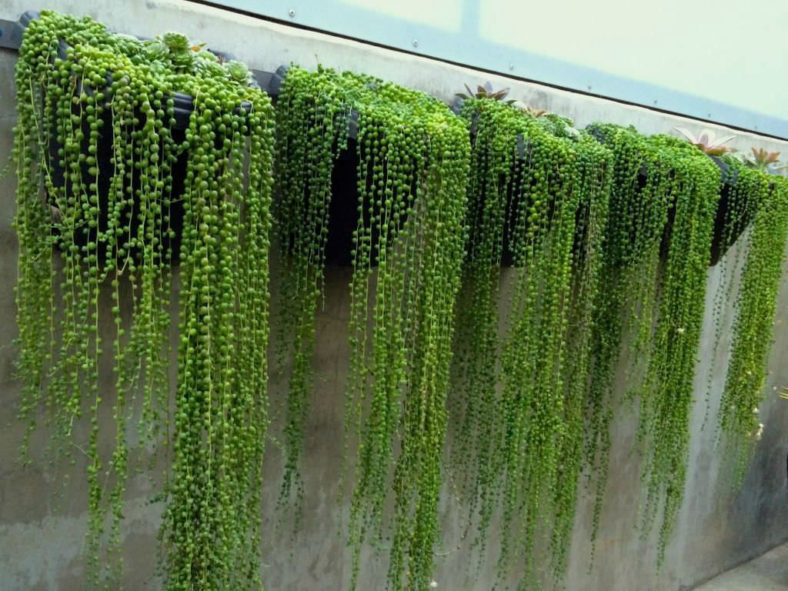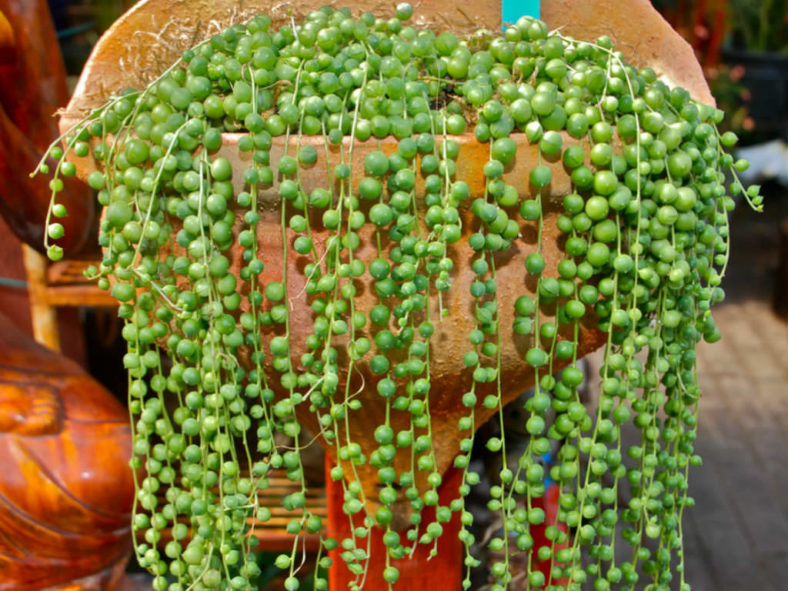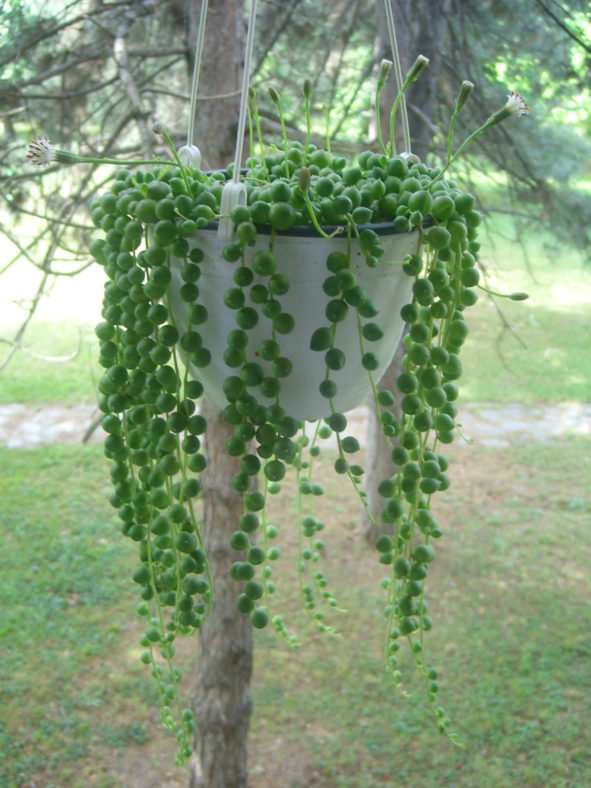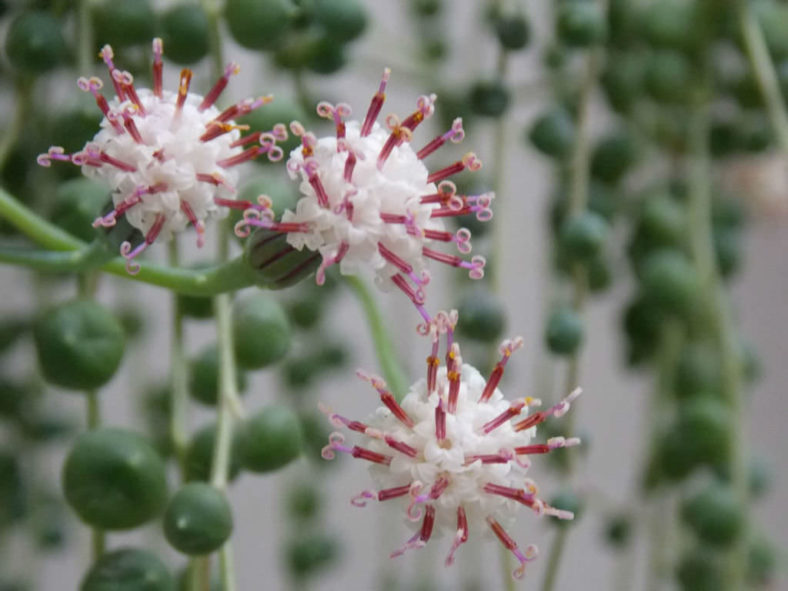Scientific Name
Curio rowleyanus (H. Jacobsen) P.V. Heath
Common Name(s)
Rosary Vine, String of Beads, String of Pearls, String of Peas
Synonym(s)
Curio rowleyanus f. rowleyanus, Kleinia rowleyana, Senecio rowleyanus
Scientific Classification
Family: Asteraceae
Subfamily: Asteroideae
Tribe: Senecioneae
Subtribe: Senecioninae
Genus: Curio
Etymology
The specific epithet "rowleyanus" (pronounced "ro-lee-AH-nus") honors Gordon Douglas Rowley (1921–2019), a British botanist and writer specializing in cacti and succulents.
Origin
Curio rowleyanus is native to South Africa (the Eastern Cape and Western Cape) and southern Namibia.
Description
Curio rowleyanus, formerly known as Senecio rowleyanus, is a popular succulent with trailing stems lined with small, pea-shaped leaves. The stems can grow up to 3 feet (90 cm) long and root at the nodes. The leaves are almost spherical, with a small pointed tip and a longitudinal translucent stripe. They can reach about 0.3 inches (0.8 cm) in diameter.
Brush-like clusters of small white to nearly white flowers with long red stamens and bright yellow anthers appear in summer on stalks that can grow up to 1.5 inches (3.8 cm) long. They have an aroma of cinnamon.

Forms of Curio rowleyanus
Hybrids of Curio rowleyanus
How to Grow and Care for Curio rowleyanus
Light: Keep your C. rowleyanus in partial shade outdoors and in bright sunlight indoors. Avoid intense afternoon sun in summer. It will grow in full shade but will become lank and leggy.
Soil: As with most succulents, this plant prefers well-draining soil. For growing C. rowleyanus indoors, it is essential to use a container with at least one drainage hole at the bottom.
Hardiness: C. rowleyanus can withstand temperatures as low as 25°F to 50°F (-3.9°C to 10°C), USDA hardiness zones 9b to 11b. The plant will not survive consistent temperatures below freezing.
Watering: Water regularly during the growing season, allowing the soil to dry out between waterings. This plant is drought-tolerant, but the soil should never be left dry for too long. Reduce watering frequency during the winter months. Water only if the soil is completely dry.
Fertilizing: C. rowleyanus needs more fertilizer than other succulents to grow quickly. In summer, feed your plant a dilute solution of a balanced, water-soluble fertilizer once a year.
Repotting: You do not need to repot this plant often. You can do it when the container becomes too small or shallow.
Propagation: This plant can be grown from seeds or cuttings. Seeds need warm temperatures and constant moisture to germinate. Take cuttings during the spring and summer.
Learn more at How to Grow and Care for Curio.
Toxicity of Curio rowleyanus
C. rowleyanus is a toxic plant. You should grow it with great care if you have children, pets, or livestock.
Links
- Back to genus Curio
- Succupedia: Browse succulents by Scientific Name, Common Name, Genus, Family, USDA Hardiness Zone, Origin, or cacti by Genus
Photo Gallery
Click on a photo to see a larger version.


